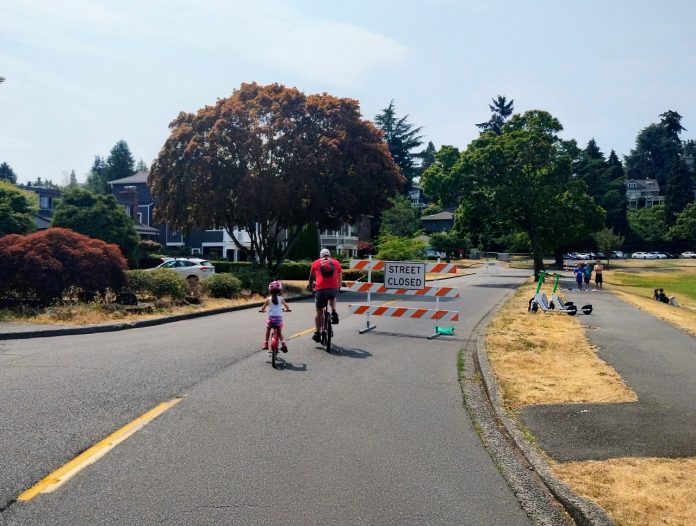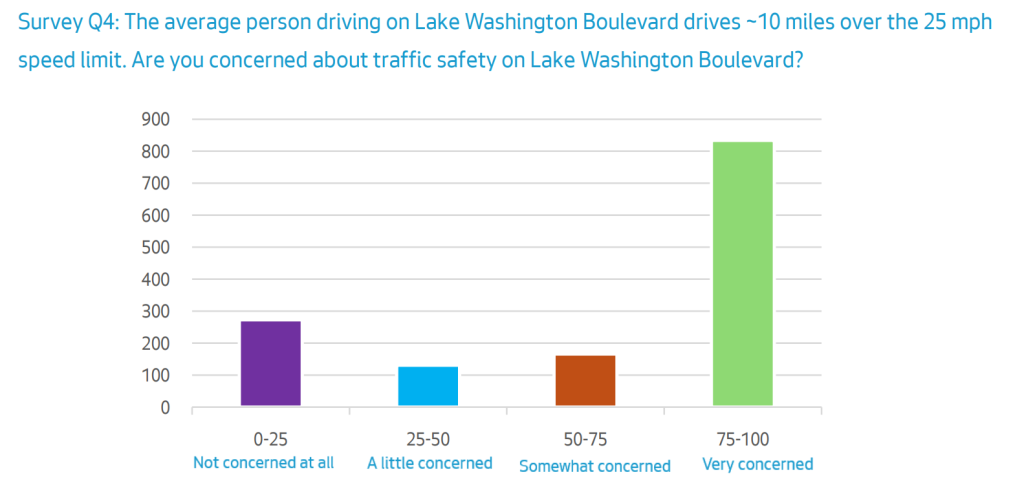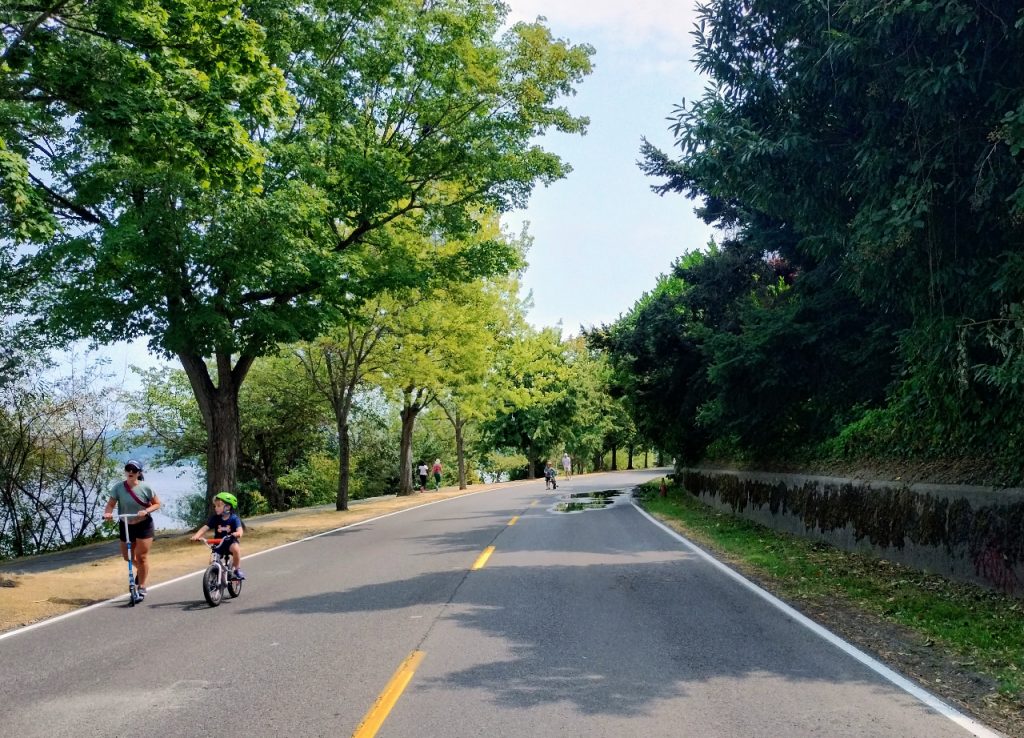
Seattle Parks and Recreation is moving forward with changes intended to improve safety on one of the most popular stretches of Lake Washington Boulevard S, a legacy Olmsted boulevard park that also has the distinction of being an arterial street. The changes include speed cushions, a few marked pedestrian crossings, and boulders that seek to reduce the number of drivers leaving the roadway. The City hopes to improve safety for users of all transportation modes, but, with rampant speeding by drivers and no clear long-term vision for the street, the spot improvements will likely only go so far in creating a street that is welcoming for all.
The street changes represent one element of the consensus developed by the City’s taskforce on the future of Lake Washington Boulevard. The Harrell Administration commissioned that taskforce following broadly popular closures of the street to motor vehicles starting in 2020. Even though 65% of respondents to a 2021 survey were in favor of keeping the entire street open to people walking and biking, the taskforce disagreed and declined to pursue a long-term redesign, instead only agreeing that traffic calming measures were needed along the corridor.
That need is clearly apparent: a speed study conducted by the Seattle Department of Transportation (SDOT) last year at Horton Street, in the middle of this stretch, found more than one in five drivers on the street were exceeding 35 mph on a street with a 25 mph posted speed, with one out of every 100 drivers exceeding 45 mph. On top of that, dozens of drivers per week were exceeding 65 mph with top speeds of around 90 mph recorded.
Unaddressed speeding issues have contributed to dangerous collisions. Over Labor Day weekend, someone riding a bike at Lake Washington Boulevard S and S 43rd Street was hit by a driver and transported to the hospital.
In response to a survey question about how the amount of speeding on Lake Washington Boulevard impacts visitors to the street, the vast majority of respondents said it made them “very concerned.” People biking on the street have long reported being passed dangerously by drivers, but until now there was very little infrastructure in place to address this.

Thanks to a grant from Washington’s Transportation Improvement Board (TIB), the scope of the project has expanded since initial plans were presented last year, with an initial set of improvements now set be installed this fall and a second phase in 2025. What was originally set to be 10 speed cushions added between Mount Baker Beach and Seward Park will now be 24 cushions.
However, a planned all-way stop at Lake Park Drive, the primary access point for Mount Baker Beach, has been removed from the initial plans after analysis suggested it would delay motorists. Currently, drivers encounter a stop sign only if they are coming from Lake Park Drive, leaving families trying to cross to get to the beach waiting for a break in traffic.

In justifying the removal of the all-way stop, Seattle Parks pointed to potential backups that drivers may experience in justifying a more “refined” approach. “The Lake Park Dr S intersection met the necessary traffic volume thresholds for an all-way stop in the initial SDOT All-Way Stop Warrant Analysis, but additional analysis showed the potential for some traffic queuing during peak travel hours,” the final report noted. This statement was removed from the report several days after its release, with the new version no longer including any justification for removing the stop signs from the plans at all.

For a while, it looked like Lake Washington Boulevard might represent an opportunity for the city to think differently about how it uses park space for drivers, as a Pacific Northwest counterpart to the closure of the Great Highway and Golden Gate Park’s JFK Drive in San Francisco. However, a fairly well-organized contingent has vigorously opposed the effort.
The Harrell Administration appears reticent to explore any long-term changes to Lake Washington Boulevard that might disrupt drivers who use the corridor, going so far as to intervene to scale back the Seattle Parks plan for weekend closures of the street this summer, as part of the longstanding Bicycle Weekends program. Given that political reality, the speed cushions and added crosswalks likely represent the biggest improvements that the street will see, at least for a few years. Interventions that slow drivers and make things safer for all people trying to enjoy this unique park space in the South End are badly needed, and it’s clear many Seattleites are clamoring for them despite the grinding Seattle Process denying that reality.
Ryan Packer has been writing for The Urbanist since 2015, and currently reports full-time as Contributing Editor. Their beats are transportation, land use, public space, traffic safety, and obscure community meetings. Packer has also reported for other regional outlets including BikePortland, Seattle Met, and PubliCola. They live in the Capitol Hill neighborhood of Seattle.

